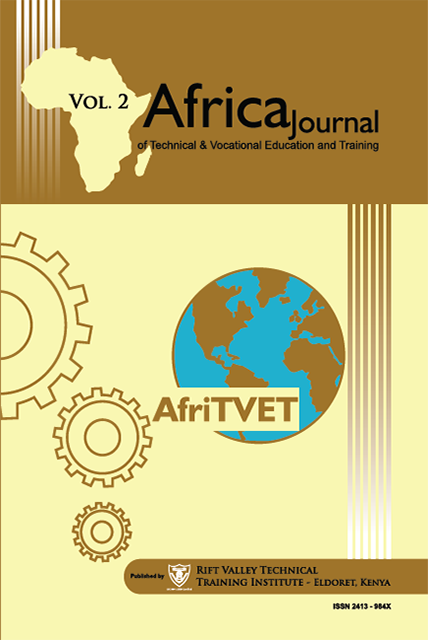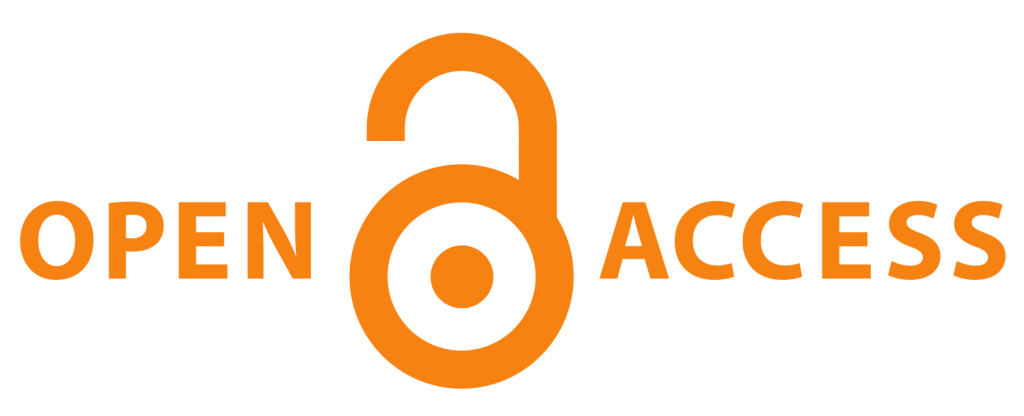Making University Curriculum Development Friendly to Industry: Towards a TVET Agenda
Keywords:
Curriculum, education, ICT, industry, IPT/FPT, Tanzania, TVET
Abstract
In recent years, there has been a rapid technological change in the world in many fields. From time to time, there are ever widening technical skill gaps in the labour market of scientists and an engineering technician. This paper explores the diffusion and characteristics of collaborative relationships between universities and industry in the implementation of TVET Curriculum. It builds on the experience of six year study of transformation efforts of the technical education development of Mbeya University of Science and Technology (MUST). In our professionals and technologists experience, education teaching practices and interrogation with the industry firms are necessary elements of the university curriculum development, leading to high quality results when effectively implemented. The paper builds on the critical examination of the current status of curriculum and how it is linked with industry in teaching and learning at MUST. The enabling and constraining factors affecting its operation and development in the light of the serious bottlenecks were identified, analysed, and recommended upon. The analysis was performed on the basis of the existing body of research, the role of practices such as collaborative research, and the university curriculum relations to industry research centres. Furthermore, the paper explores the strategies used to combat these challenges and suggests the way forward.Article Views and Downloands Counter
Download data is not yet available.
References
Ali, A. (1994). Pioneering versus incremental innovation: Review and research propositions. Journal of Product Innovation Management, 11 (1), 46-61.
De Munck, V. C., & Sobo, E. J. (1998). Using methods in the field: A practical
introduction and casebook. Rowman Altamira
DeWalt, K. M., & DeWalt, B. R. (2010). Participant observation: A guide for
fieldworkers. Rowman Altamira.
Erlandson, D. A. (1993). Doing naturalistic inquiry: A guide to methods. USA: Sage.
Retrieved from https://www.amazon.com/Doing-Naturalistic-Inquiry-Guide
-Methods/dp/0803949383
Hamel, G., & Prahalad, C. K. (2013). Competing for the future. Harvard Business Press. http://www29.homepage.villanova.edu/john.kozup/MBA%208610/ competing%20for%20future.pdf
Kayange, D. S. (2015). Evaluating the specific learning mechanisms and a longitudinal transformation output by using the performance indicators. International Journal of Research - GRANTHAALAYAH Vol.3 (Iss.12): December, 2015.
Marshall, C., & Rossman, G. B. (2014). Designing qualitative research: Sage Publications. Retrieved from https://us.sagepub.com/en-us/nam/designing- qualitative-research/book240236
Okubo, Y., & Sjöberg, C. (2000). The changing pattern of industrial scientific
research collaboration in Sweden. Research Policy, 29(1), 81-98.
Schensul, S. L., Schensul, J. J., & LeCompte, M. D. (1999). Essential ethnographic methods: Observations, interviews, and questionnaires (Vol. 2): Rowman Altamira.
Scholastica, L., & Kayange, D. (2014). The use of information and communication technology in implementation of curriculum in higher learning institutions: The case study in Tanzania. The SIJ Transactions on Computer Science Engineering & its Applications (CSEA), Vol. 2, No. 7 Retrieved from https:// www.researchgate.net/publication/268577361
De Munck, V. C., & Sobo, E. J. (1998). Using methods in the field: A practical
introduction and casebook. Rowman Altamira
DeWalt, K. M., & DeWalt, B. R. (2010). Participant observation: A guide for
fieldworkers. Rowman Altamira.
Erlandson, D. A. (1993). Doing naturalistic inquiry: A guide to methods. USA: Sage.
Retrieved from https://www.amazon.com/Doing-Naturalistic-Inquiry-Guide
-Methods/dp/0803949383
Hamel, G., & Prahalad, C. K. (2013). Competing for the future. Harvard Business Press. http://www29.homepage.villanova.edu/john.kozup/MBA%208610/ competing%20for%20future.pdf
Kayange, D. S. (2015). Evaluating the specific learning mechanisms and a longitudinal transformation output by using the performance indicators. International Journal of Research - GRANTHAALAYAH Vol.3 (Iss.12): December, 2015.
Marshall, C., & Rossman, G. B. (2014). Designing qualitative research: Sage Publications. Retrieved from https://us.sagepub.com/en-us/nam/designing- qualitative-research/book240236
Okubo, Y., & Sjöberg, C. (2000). The changing pattern of industrial scientific
research collaboration in Sweden. Research Policy, 29(1), 81-98.
Schensul, S. L., Schensul, J. J., & LeCompte, M. D. (1999). Essential ethnographic methods: Observations, interviews, and questionnaires (Vol. 2): Rowman Altamira.
Scholastica, L., & Kayange, D. (2014). The use of information and communication technology in implementation of curriculum in higher learning institutions: The case study in Tanzania. The SIJ Transactions on Computer Science Engineering & its Applications (CSEA), Vol. 2, No. 7 Retrieved from https:// www.researchgate.net/publication/268577361
Published
2017-10-01
How to Cite
Scholastica, L., & Sinkonde, D. (2017). Making University Curriculum Development Friendly to Industry: Towards a TVET Agenda. Africa Journal of Technical and Vocational Education and Training, 2(1), 163-171. Retrieved from https://afritvet.org/index.php/Afritvet/article/view/48
Section
PARTNERSHIPS FOR SUSTAINABLE DEVELOPMENT
Copyright Notice
Copyright of published articles is held by AfriTVET. No limitation will be placed on the personal freedom of authors to copy or to use in subsequent work, material contained in their papers. Please contact the Publisher for clarification if you are unsure of the use of copyright material. Apart from fair dealing for the purposes of research and private study, or criticism and or review, this publication may only be reproduced, stored or transmitted, in any form or by any means, with the prior permission in writing of the Publishers.



